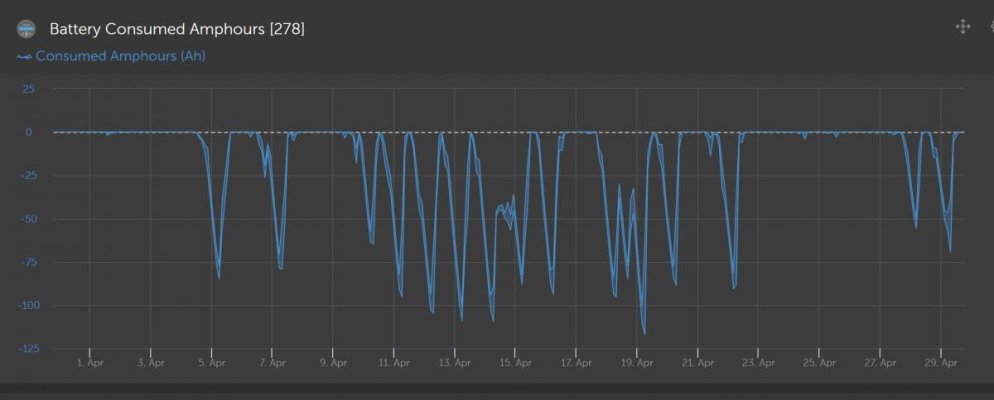jefndeb
Guru
Hello,
We headed north one month ago in our 2006 Mainship 40 (Savannah to Chesapeake Virginia so far) and we have anchored out as many times as was possible. Looking at our electrical budget and our 440AH AGM House battery bank, and although this will be different for each boat, I was just wondering if an overnight AH reading of from 75 to 100Ah, as shown on the Victron web portal, is what to expect with the fridge/freezer on, anchor Light, maybe a small .5 amp DC fan going and that's about it...
This is a historical record of about 30 days, some at anchor some not....but its easy to see the ones at anchor....
Jeff
M/V Indigo Star
We headed north one month ago in our 2006 Mainship 40 (Savannah to Chesapeake Virginia so far) and we have anchored out as many times as was possible. Looking at our electrical budget and our 440AH AGM House battery bank, and although this will be different for each boat, I was just wondering if an overnight AH reading of from 75 to 100Ah, as shown on the Victron web portal, is what to expect with the fridge/freezer on, anchor Light, maybe a small .5 amp DC fan going and that's about it...
This is a historical record of about 30 days, some at anchor some not....but its easy to see the ones at anchor....

Jeff
M/V Indigo Star

